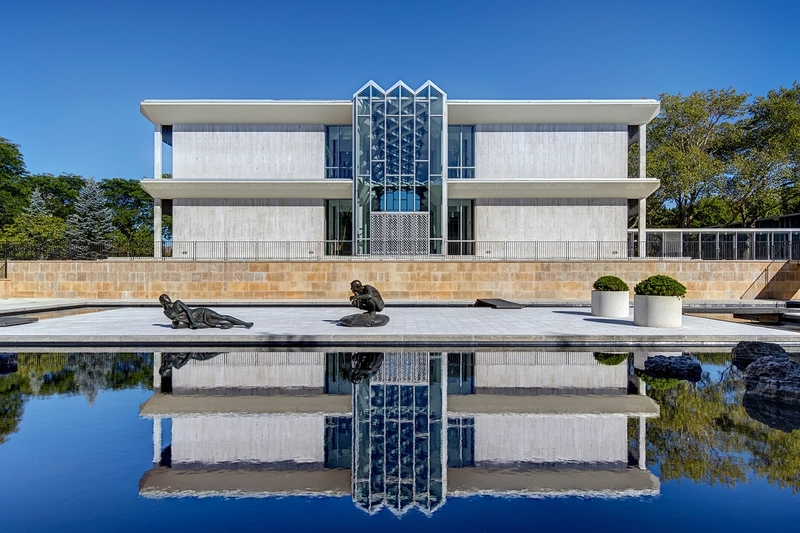
Library Street Collective has developed a unique digital connection between the visual arts and the built environment, incorporating aspects of storytelling, architectural history and an artist’s unique perspective through the presentation of SITE: Art and Architecture in the Digital Space. Each exhibition featured within this digital platform will respond to its environment, making connections between art and place. Library Street Collective has engaged renowned architectural photographer James Haefner to help realize the vision for SITE. Haefner is the co-creator of 'Michigan Modern: An Architectural Legacy’, and has been key in creating the architectural imagery and seamless digital renderings for SITE.
As a means to positively impact our community, Library Street Collective will be donating 10% of the proceeds from any works sold during SITE: McGregor Conference Center to Humble Design Detroit, a nonprofit organization that transforms lives and communities by custom designing and fully furnishing home interiors of families, veterans, and individuals who are emerging from homelessness. Since their origination in 2009, the group has furnished over 1,400 homes in the metro Detroit area.
Library Street Collective is excited to share the fourth iteration of SITE, set against Wayne State University’s McGregor Memorial Conference Center, a masterpiece by world-renowned architect Minoru Yamasaki. With its striking atrium, sculpture garden, and dramatic columns, many still consider the McGregor one of Yamasaki’s most distinguished works. The pavilion’s deep overhangs and pattern of linked inverted triangles contrast to the glass facets capping the atrium. In describing the building, Yamasaki claimed that he tried “to create a beautiful silhouette against the sky, a richness of texture and form, and a sense of peace and serenity.”
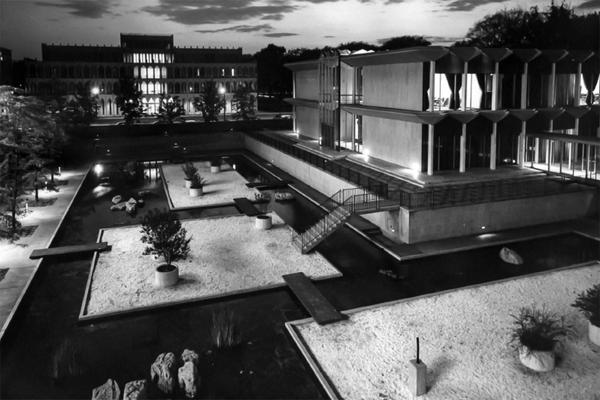
McGregor Memorial Conference Center
With its striking atrium, sculpture garden, and dramatic columns, many consider the McGregor Memorial Conference Center to be one of Yamasaki’s most distinguished structures.

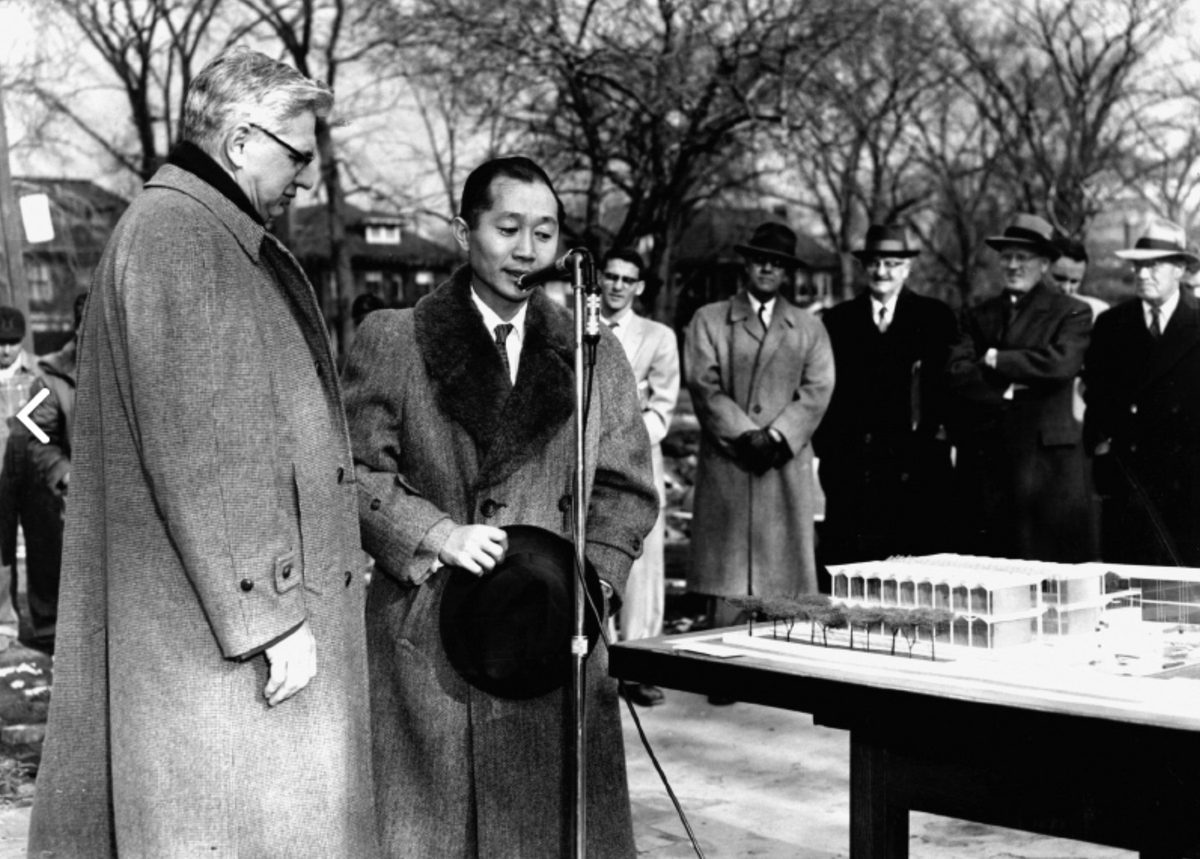
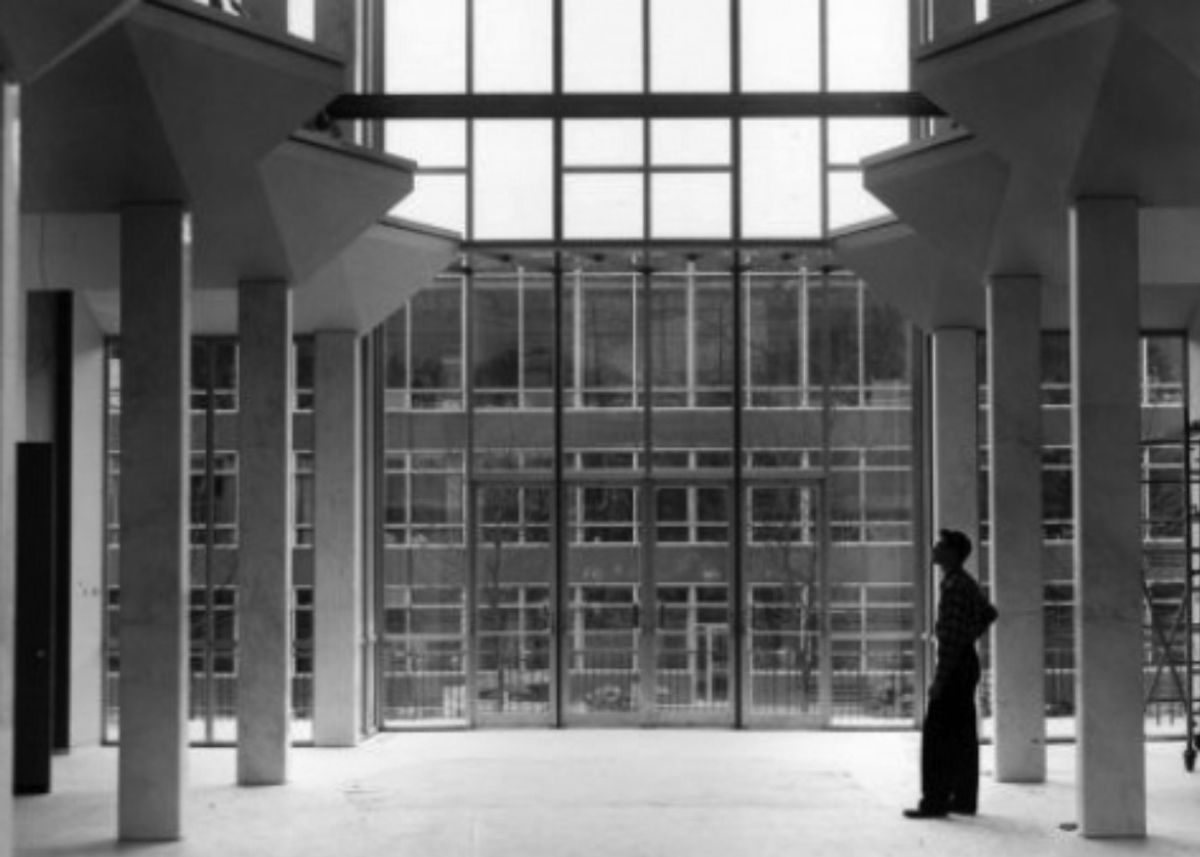
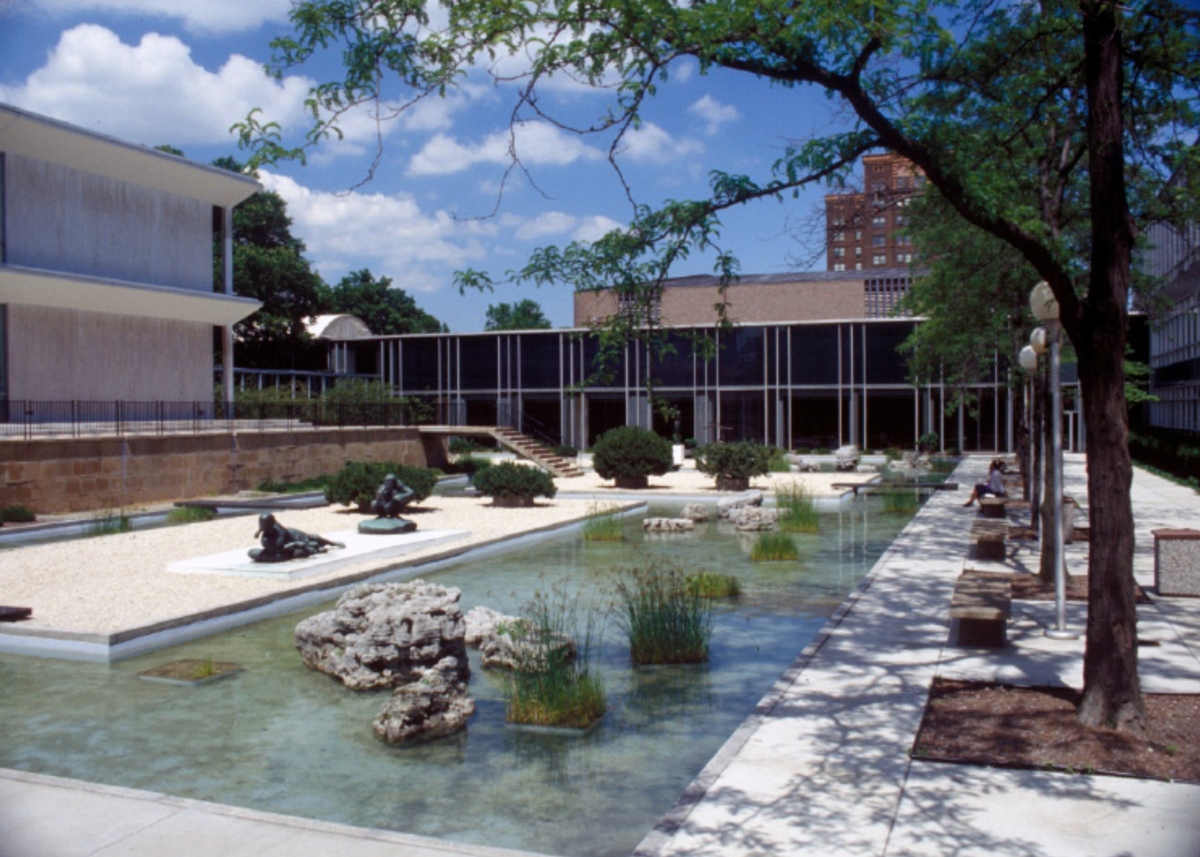
The mezzanine’s deep overhangs and pattern of linked inverted triangles stand in contrast to the glass facets that shelter the atrium. In describing the building, Yamasaki claimed that he tried “to create a beautiful silhouette against the sky, a richness of texture and form, and a sense of peace and serenity.” In the buildings that he designed following his trip across Europe and Asia—and inspired by his new insight regarding humanist design—one of the first was the McGregor Memorial Conference Center. The focus on integrating function with what the architect would later term as “delight, serenity, and surprise” continued to inform his work, both in his later designs for the Wayne State campus and elsewhere. This humanistic approach, which was also championed by New York area architects Edward Durrell Stone and Phillip Johnson, would later become known as New Formalism or Neo-Palladianism.
Installation Images
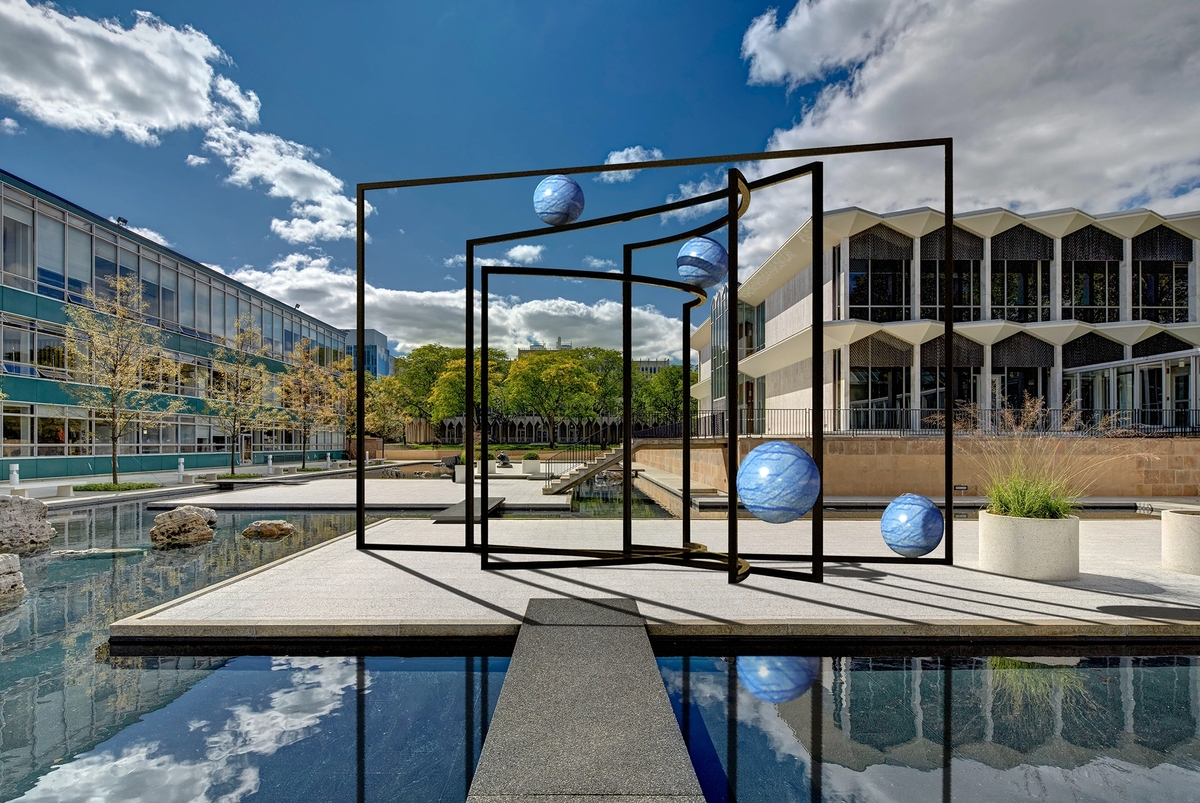
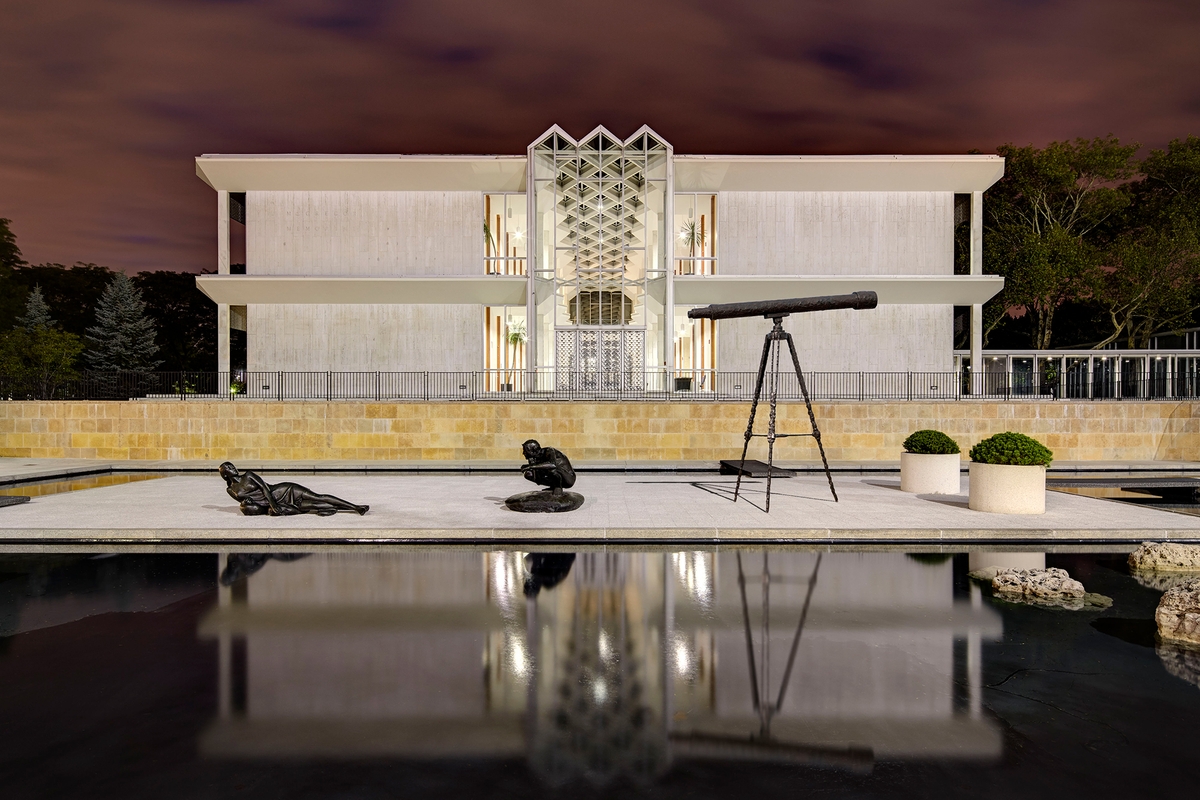

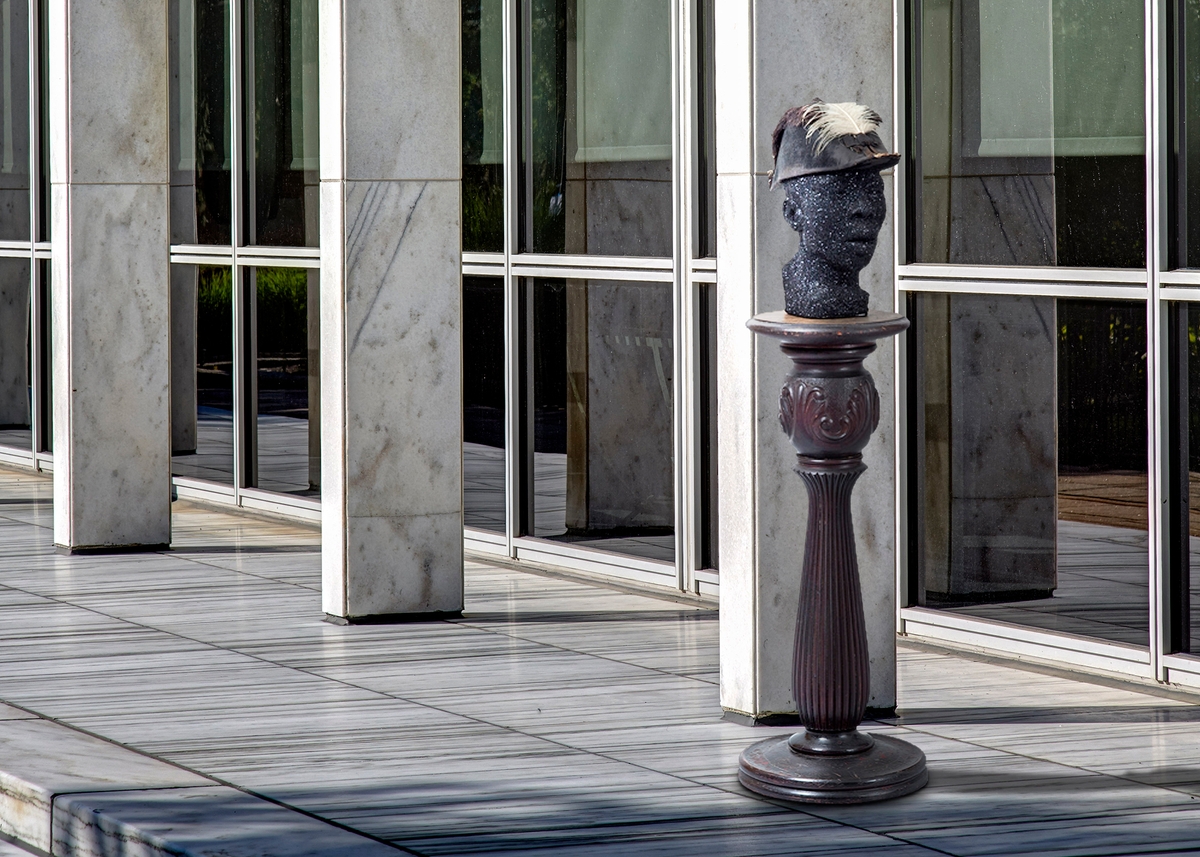


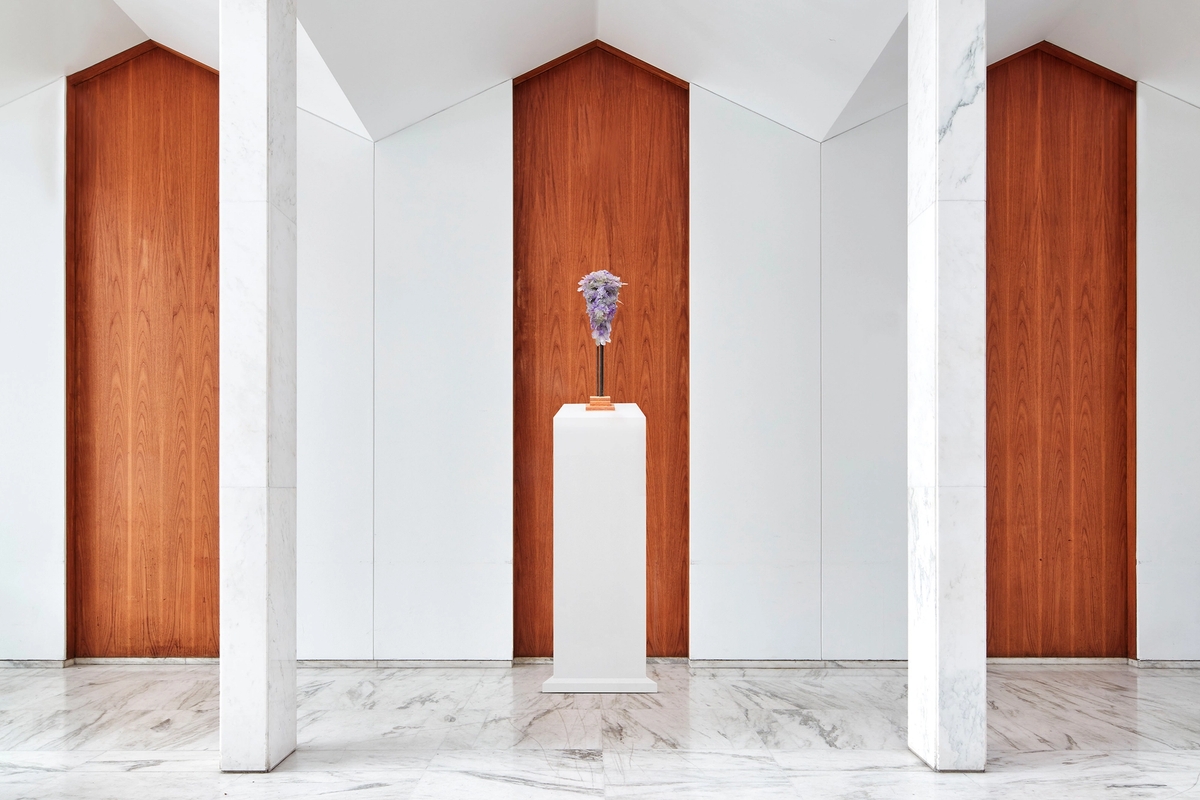

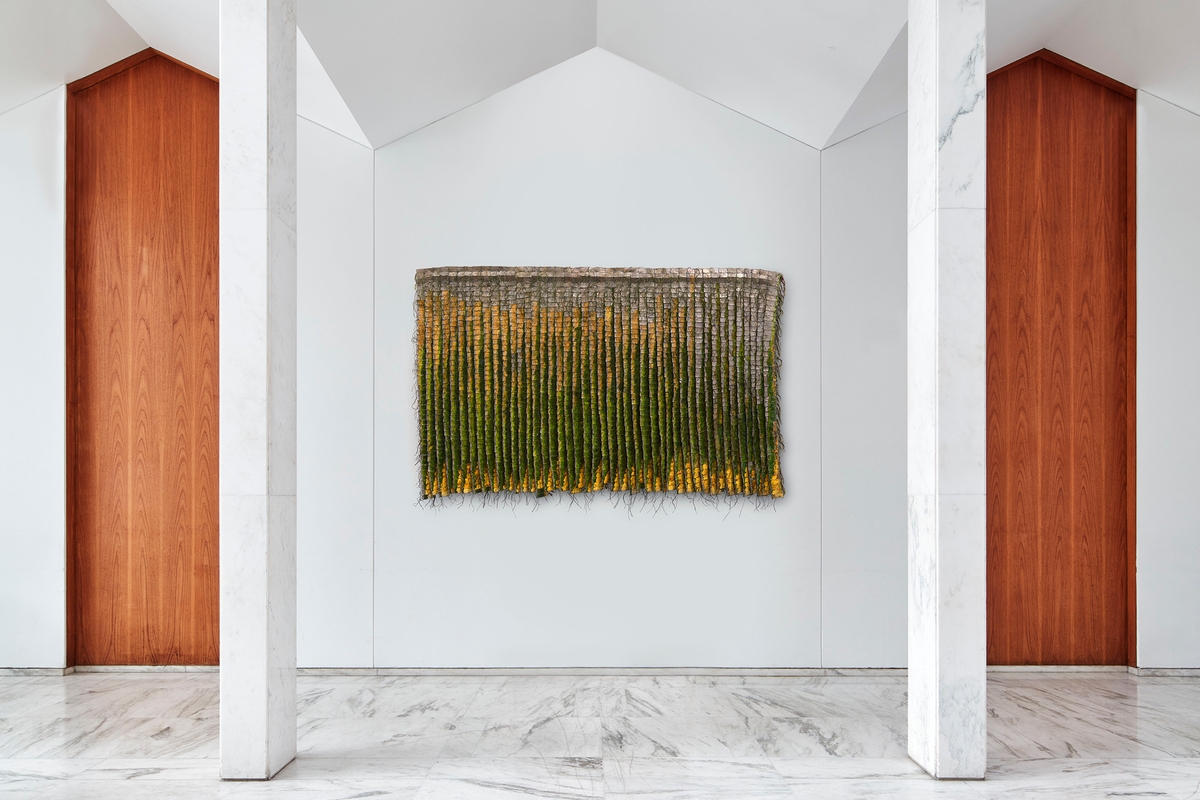
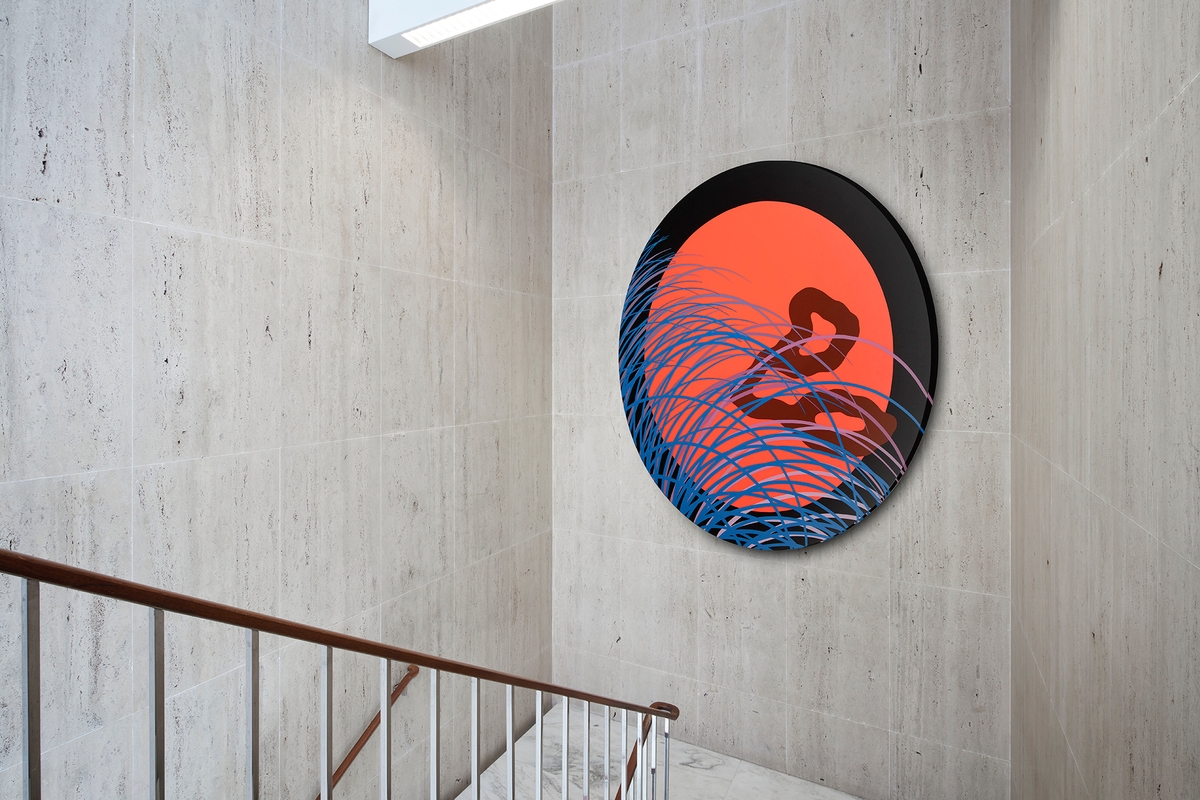
Completed on May 18, 1958, the design of the McGregor Conference Center marks an important shift in Yamasaki’s career following a six month trip through Asia and Europe in 1955. In the decade leading up to the McGregor commission, the architect adhered to the strict modernist principles prescribed by Mies Van der Rohe and Corbusier, but his time abroad inspired a personal shift through which he realized that “beauty, elegance, and human welfare trumped strict adherence to formal principles.” The Architectural Record declared that the McGregor was “as graceful and sun-filled as a dream palace,” confirming Yamasaki’s success in creating a structure that was in harmony with both man and environment. The architect’s transformation from formalism to humanism in design mirrors a concept inherent to the idea of the dream palace: a place that presents us with the mystery of the subconscious and a confrontation with what lies beyond the boundaries of our limited awareness. It is within this context that we examine the works of artists David Altmejd, Olga de Amaral, Radcliffe Bailey, Judy Bowman, Elmgreen & Dragset, Sam Friedman, Matt Kleberg, Paul Kremer, Alicja Kwade, and Erwin Wurm.
SITE Artists

David Altmejd
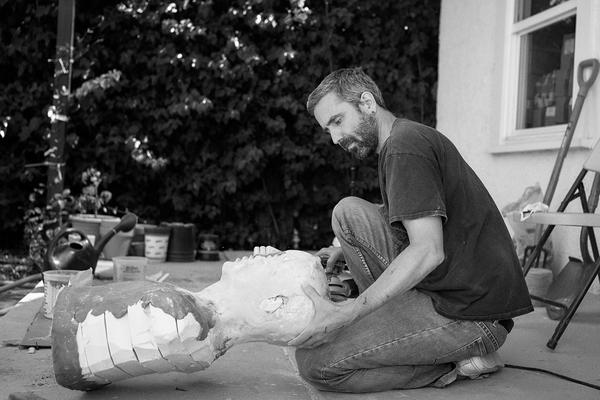
David Altmejd explores the constitution and disintegration of the self, producing sculptures that expand the range of figurative representation. Beginning with the human form, Altmejd uses a vast array of materials and processes to excavate and fragment the body, making material the intangible forces of mind, imagination, and soul. Much like the earth’s regenerative cycle, Altmejd creates moments of growth from destruction; where a figure is wounded or cracked open, crystals, prisms, and fruiting bodies breed. The synthesis of decay and regeneration is at the core of the artist’s practice and follows a belief aligned with Confucian, Ayurvedic, and Tibetan notions that within each body, the universe is contained. Like a living thing, the works appear as if in a constant state of evolution, buzzing with life force and reflecting the mysteries of consciousness. Says Altmejd, “I like the idea that figures can contain the infinite within themselves – there is infinity outwards and also inwards.”
“In art, there is the transmission of the unconscious toward the conscious, as if the essence in the work is something that comes intuitively from the unconscious. If viewers can connect to that essence, there is something important that happens.”
— David Altmejd

Olga de Amaral
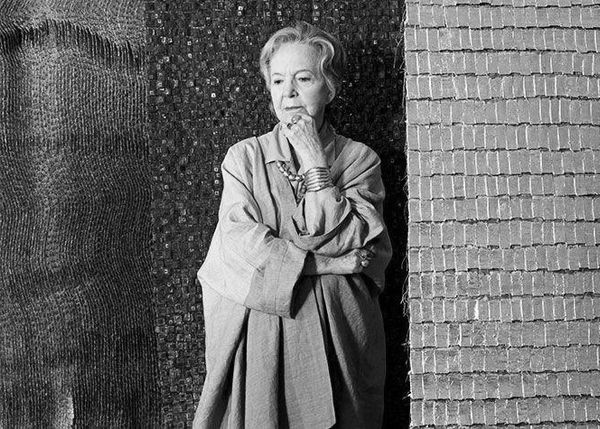
A pioneer in the fiber arts, Olga de Amaral is renowned for a technique that incorporates fiber, paint, gesso and precious metals, infusing two-dimensional textile structures with a sculptural presence that seamlessly blends art, craft, and design. During the 1950s, she trained in architectural drafting in her hometown of Bogotá, Colombia where she spent much of her life working, although European and American influences were also strong. She went on to study textiles at Cranbrook Academy of Art in Bloomfield Hills, Michigan by the encouragement of friend and architect Hans Drew, who she recalls telling her that the school was “more than a place to study design and crafts… it was a place that valued freedom.” It would take a decade of focusing on functional textile design—furniture upholstery and clothing—before Amaral would wholly embrace the idea of freedom within her practice as she began approaching the art of fiber in an unparalleled manner. Driving her practice are precious commodities such as gold and gesso, threaded into Amaral’s works to demonstrate her prioritization of conceptual aesthetics over utility. Like Yamasaki, Amaral sought to make her work approachable and welcoming, and succeeded in this intention by rebelling against preconceived notions of what defines luxury; when her works are displayed, a moment of grandeur and opulence is offered to all.
“As I build these surfaces, I create spaces of meditation, contemplation and reflection… Tapestry, fibres, strands, units, cords, all are transparent layers with their own meanings, revealing each other to make one presence, one tone that speaks about the texture of time.”
— Olga de Amaral
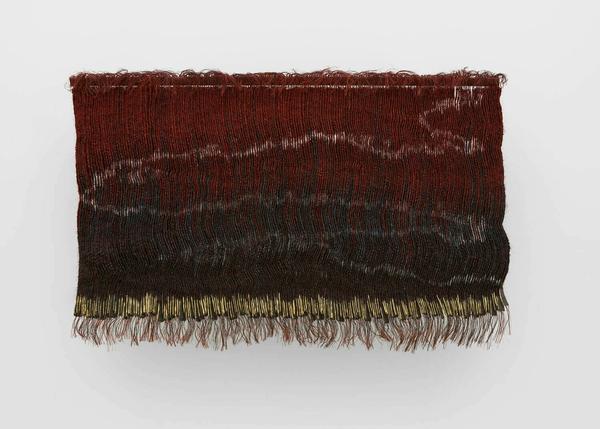
Olga de Amaral
Tierra y oro 11 (soplo de oro), 1988
Linen, gesso, horsehair and gold leaf
31.5h x 51.125w in
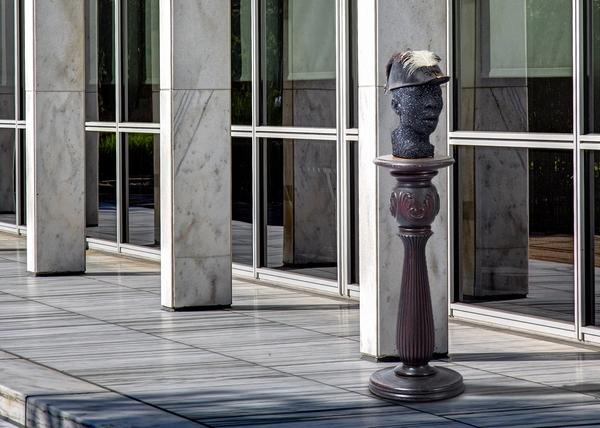
Radcliffe Bailey
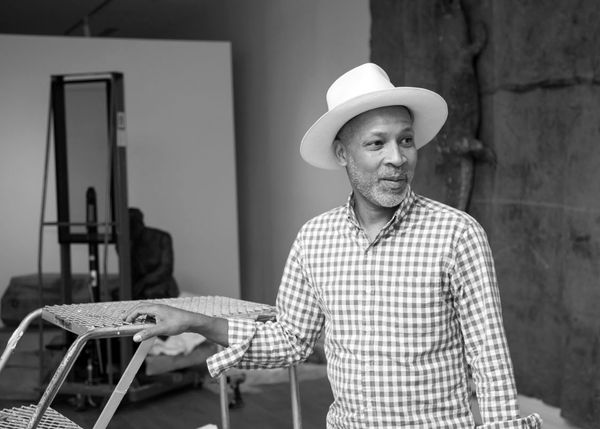
Radcliffe Bailey is a painter, sculptor, and mixed media artist who utilizes the layering of imagery, culturally resonant materials and text to explore themes of ancestry, race, migration and collective memory. Through individual experience and recounted histories, Bailey finds his point of departure, using a collection of found objects to honor the magnitude of sacrifice across generations of the African diaspora. Poetic and reverent, Bailey’s sculptures and installations seem to create a unified past, present, and future. With Untitled, the artist presents a bust created from a death mask mold he obtained in Belgium from an antiques dealer, the original likely taken from the Congo during Belgian colonization. The bust subverts Western formalism to address social and historical concerns, and mirrors the documentation in European museums of abuses in the Belgian-ruled Congo. A mixture of black paint and white sand evokes constellations of stars and was inspired by the beaches of Jamaica, an important location in the history of the slave trade.
“I feel like we live in between two different worlds: one world of things that are tangible and one world where things are not tangible. We live in our dreams and during the day. It’s a whole strange space.”
— Radcliffe Bailey
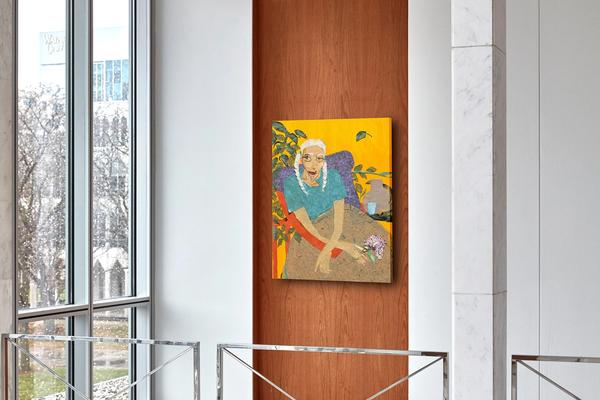
Judy Bowman

Judy Bowman is a Detroit-based artist who reframes narratives around the Black experience, rooted in scenes that have nurtured her upbringing in Detroit’s Eastside community and Black Bottom neighborhood. Bowman’s emotionally charged mixed-media collages represent everyday life, with vibrant portraits that reflect human relationships, love, faith and moments in time and place. Inspired by the work of Romare Bearden, Kerry James Marshall, and Elizabeth Catlett, Bowman’s collages serve as archives of Black life and resilience; style and pride; music and spirituality. Part of a series of works about her mother, I Kiss a Boy and His Name was Fred came about during a new phase in their relationship. A retired mother of ten, the artist now spends her days making art and caring for her mother, who she has gotten to know in an entirely new light. The work was inspired by an afternoon conversation on their porch, when Bowman asked her mother about her first kiss and she lit up: “She was so emotional and nostalgic. She went there, went back. It was the look in her eyes.” Bowman has work in the permanent collection of the Detroit Institute of Arts, is a 2021 Kresge Fellow, and a 2021 Alain Locke Recognition Art Awardee.
“My work is created to tell the story of how I see my people, how we lived and the power of our being.”
— Judy Bowman

Elmgreen & Dragset
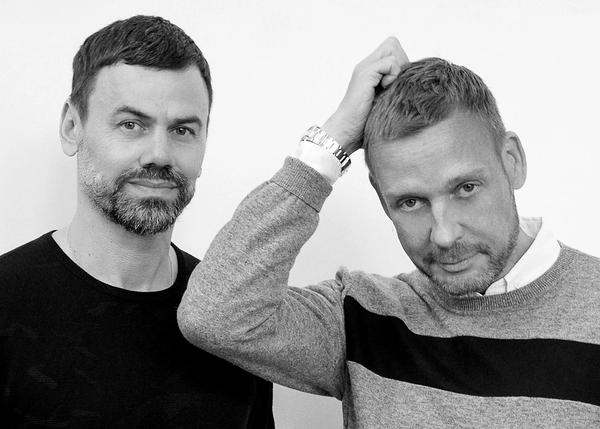
Artist duo Elmgreen & Dragset integrate art, architecture, installation, public art and performance in their expansive practice, embracing the ability to shift aesthetics, styles, and mediums across unique works. The concepts that inform their practice are pulled from countless sources: childhood experiences, middle-brow aesthetics, and queer theory to name a few. Connecting the abundance of concepts across various bodies of work is a common foundation built on skepticism of conventional ideologies and power constructs, exploring the discourse that can arise when local environments or familiar objects are wildly recontextualized. The duo’s conceptualized phrase ‘Powerless Structures’ captures the glorious futility of their oversized bronze telescope A Greater Perspective, which was commissioned by New York’s High Line in 2015. The grand scale of the sculpture deems it completely inaccessible to the viewer, and its production in heavy bronze disallows the telescope’s prescribed use. By exploiting this observational instrument of discovery, the artists propose that the perspectives of the great explorers who shaped history and inform today’s culture are outdated, narrow, and have failed to cater to the diverse world around us. Involving the public environment is a crucial component of their work, as the relationship between space and object stages a unique strangeness in a familiar world, inviting art lovers and passersby alike to engage in a whimsical encounter that celebrates our communities’ shared spaces.

A Greater Perspective, 2015
Bronze, steel, black patina, wax
145.75h × 147.5w × 72.75d in
Installation view, O’Donnell Park, Sculpture Milwaukee, Milwaukee, WI, 2019.
Courtesy of the artists and Galerie Perrotin
“It’s so important to show that you can break the rules, even on a small scale, especially in societies that have become more and more regulated. If you don’t keep that flame alight, what is there, in the end?”
— Ingar Dragset
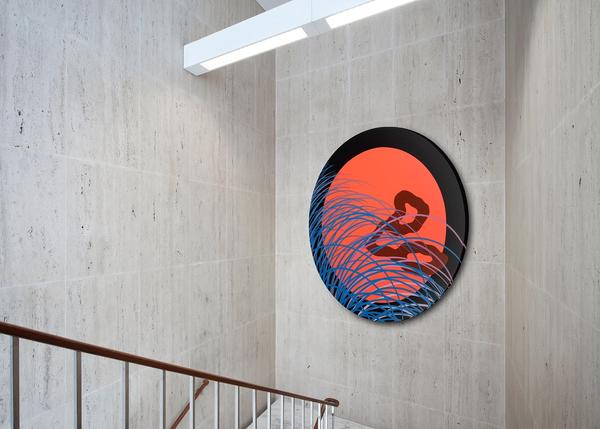
Sam Friedman
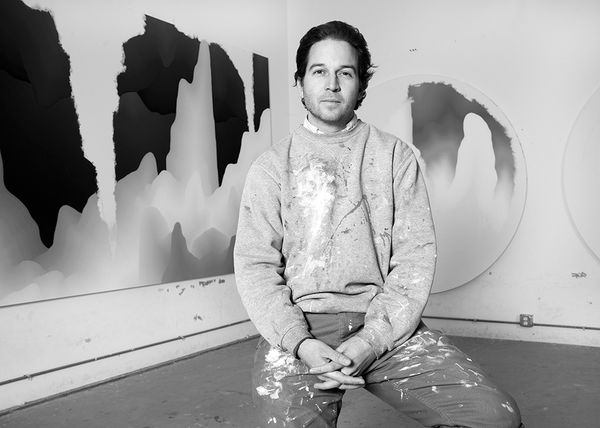
Through his dreamlike compositions achieved by a distinct use of line, pattern, and radiant color, Friedman seeks the state of mind he encounters within nature. Though his works have elemental and naturalistic qualities, they are built not by reference to the physical aspects of the outdoors, but by the flow and movement within nature to address questions about the practice of painting itself. Like the New York Abstract Expressionists of the 1950s, he explores abstraction in order to touch on concepts that are more existential in nature - life and death, love, spirituality, and a range of universal human emotions that allow the viewer to manifest their own pure and innate response. Friedman’s “Beach Paintings” demonstrate his ability to move between representation and abstraction with seeming ease and spontaneity. Assembling ethereal scenes of sunset and sunrise, the imbued colors are not a reflection of reality, but rather a consideration of the emotions felt when immersed in such a sublime environment. From afar, the paintings are pictorial, however, upon close examination, Friedman’s tenacity and presence of mind becomes evident. By aid of a long-haired brush, Friedman intentionally avoids the complete elimination of visible paint strokes in a heightened effort to radiate a meditative energy that transcends the canvas, and carries through to the viewer’s experience of the piece.
“I’m trying to create something that has a meditative quality, or a quality of taking you away. One of those things that just kind of puts out a positive, enjoyable experience as if an element of the earth.”
— Sam Friedman
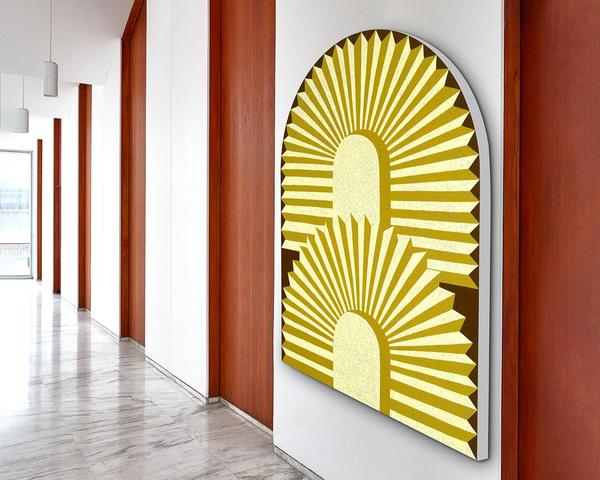
Matt Kleberg

Matt Kleberg's compositions are stationed in the realm of abstraction as expressed through the artist’s regular use of forms such as bars, stripes, archways, and radiating beams of light. Pulling from architectural and ornamental references, his works suggest an interest in spaces that welcome entrance or action; They encompass an extensive reservoir of historical precedents: ancient Roman paintings and mosaics, early renaissance images, and Baroque architectural details, as well as modernist industrial design, post-war Pop, and Color Field paintings. Through the lens of color and geometry, Kleberg builds on traditional methods of abstraction to forge a contemporary visual language reliant on formal theory and defined by an embrace of intuition. Clear references to Frank Stella can be detected in Kleberg’s work, yet unlike Stella—stark and precise in his mark-making—, Kleberg disregards the use of rigid mathematical measurements when painting, relying solely on means of the hand and eye. The compositional defects that result humanize his work, and celebrate the flawed nature of reality. Kleberg approaches his art with a unique and progressive flare that grounds his audience in the beauty of embodied human perception.
“I rarely measure anything and I don’t use tape, so no line is ever perfectly straight. I never set out to make geometric abstraction, so it’s important to me that some remnant of the hand is evident. They are physical and they relate to the body in scale but also in surface [texture.]”
— Matt Kleberg
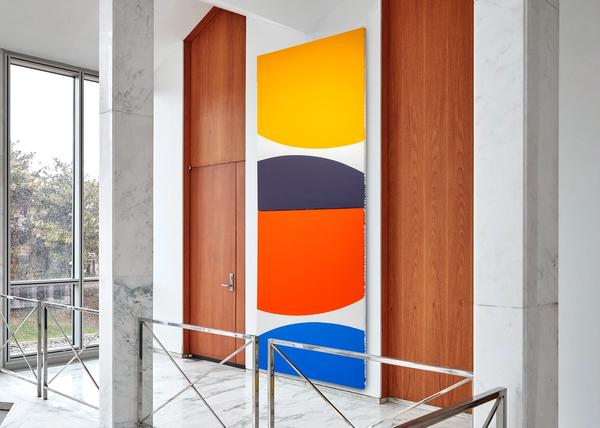
Paul Kremer
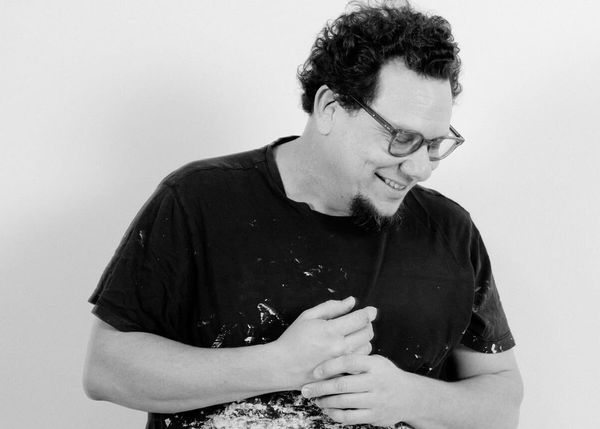
Paul Kremer is a Houston-based painter who creates distinctly organic minimalist abstractions. Kremer uses traditional methods, working with fluid acrylics on raw canvas to achieve heavily formal compositions that are softened by organic curves and the permeability of their support. Like Yamasaki, Kremer draws from a tradition of geometric formalism but aims to bring life to his abstractions by infusing instinct and humanism. Continuously evolving, the artist retains links in palette, formal cues and essentialist virtues across series. What stands out in Kremer’s work is the manner in which his flat fields of color embody a liveliness rarely seen in such precise works, as they are rooted in the immediacy and primacy of the everyday. Titles give cues to the work’s inspiration and insight into their real-life allusion; what results is an enjoyable connection to the abstraction’s referential qualities. Kremer gives life to a visual vocabulary that “communicates directly with its audience via bodily association rather than linguistic convention".
“I want to make paintings that make me feel better. When I stand in front of them, I want to feel for a moment that life is less stressful, less chaotic. I want to stir curiosity by the simplest means and add some positivity while I’m alive.”
— Paul Kremer

Alicja Kwade

Alicja Kwade is a multimedia artist who works within the space where nature, science, philosophy and perception meet, challenging our most basic assumptions about the structures that seem to govern our very existence. The artist is renowned for her ability to succinctly question and sublimate natural phenomena, using nature as a tool to investigate our senses and awareness. ParaPivot (Solidsky) is a continuance of the ideas explored during the creation of ParaPivot I and II for the Roof Garden at the Metropolitan Museum of Art in 2019. The sculpture consists of powder-coated steel frames that intersect at oblique angles, supporting four spheres made of Azul Macaubas, a unique Brazilian quartzite that is veined with auburn and blue. Kwade admires the patterns of sediment in the material: “[The spheres] look like planets because they are stones that are millions of years old - like compressed time.” The ParaPivot series of sculptures seem to hold within them the possibility of movement, and are inspired by an astrolabe - an ancient astronomical computer that was designed to explore the nature of time and how it relates to the position of the sun and stars in the sky.
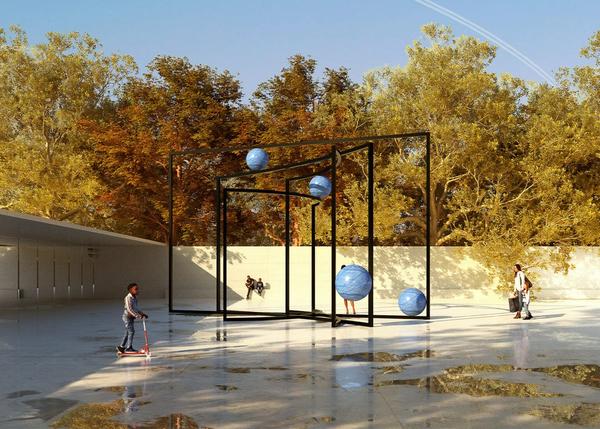
Alicja Kwade
ParaPivot (Solidsky), 2020
Black powder coated stainless steel, Azul Macaubas1
9 ft 8 in x 22 ft 7 in x 31 ft 10 in
Courtesy of the artist and 303 Gallery, New York.
“What I’m fascinated by are basic human questions, such as what reality is, and why we are here… in the limitations of our senses which never really allow us to answer those questions.”
— Alicja Kwade

Erwin Wurm
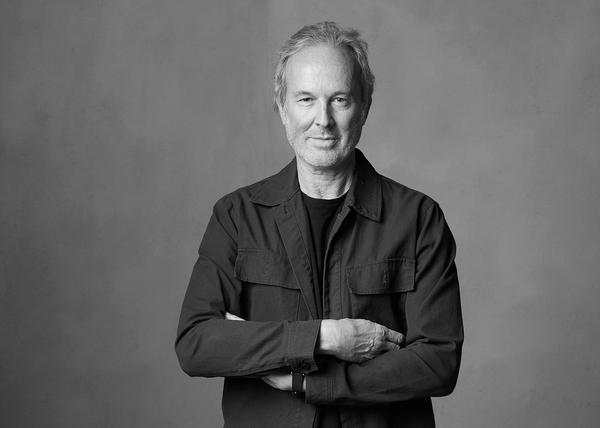
Austrian artist Erwin Wurm is best known for his sustained explorations of the material and conceptual boundaries of sculptural form. Reimagining reality, Wurm takes a satirical approach to Formalism, using humor as a tool to capture the immediate attention of the viewer and provoke self-reflection through the absurd presentation of recognizable, mundane objects. For Wurm, all forms—including our own bodies—can be considered and activated as sculpture, as with his One Minute Sculptures that invite the viewer to become a work of art for a moment through a performance guided by the artist’s instruction. Wurm’s sculptural concerns as they relate to the human body often transcend the physical participation of the viewer; the artist commonly attributes human traits to inanimate objects—such as in his Tall Bags series where human appendages are given to luxury handbags—to demonstrate the socially reinforced implications that these objects hold through anthropomorphic forms. A part of this distinguished series, Wait (Taschenskulpturen) reflects the artist’s belief that objects are an extension of their owner, used to define and communicate personal identity. The work serves as a mirror of sorts, intending to highlight the power we have allowed material objects to hold over an individual’s value or worthiness in capitalist society.
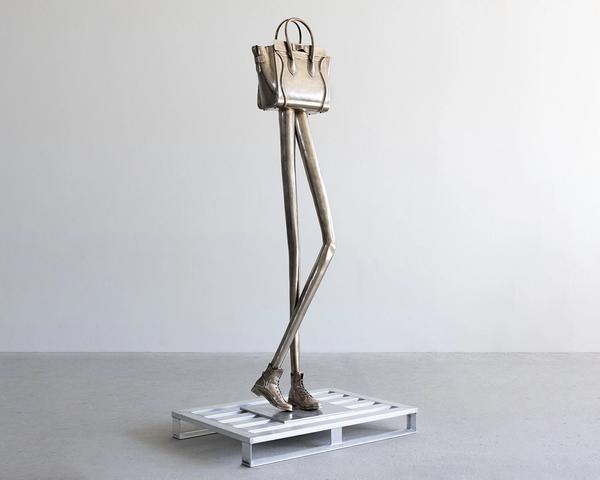
Erwin Wurm
Wait (Taschenskulpturen), 2021
Bronze
89.57h x 22.05w x 11.81d in
Edition of 3 with 2 AP
Courtesy of the artist and Lehmann Maupin.
“I am interested in the everyday. All the materials that surrounded me could be useful, as well as the objects and topics involved in contemporary society. My work speaks about the whole entity of a human being: the physical, the spiritual, the psychological and the political.”
— Erwin Wurm